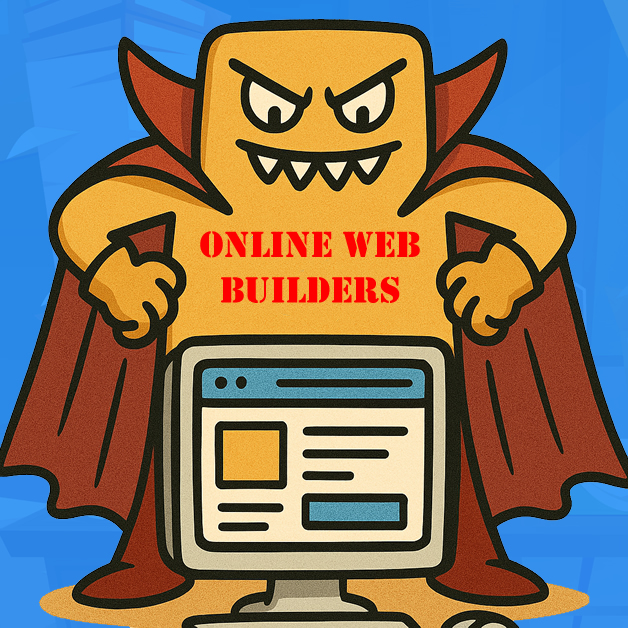
Imagine you’re starting a small business—maybe you’re baking award-winning brownies, restoring old motorbikes, or finally launching that dog grooming salon you’ve been banging on about since 2019.
You need a website. Naturally. And someone tells you, with a suspicious sparkle in their eye, “Why not use WIX AI? It’s fast, cheap, and builds itself!”
Let me stop you right there.
That is the digital equivalent of building your dream house on sand. Worse – it’s like building it on someone else’s land, with their tools, under their rules. And when they decide to change the game? Tough. You’re out of luck. Or in this case, out of business leads, buried under broken contact forms and Google penalties.
Don’t build your house on borrowed ground.
Here’s a few very good reasons why relying on WIX AI, Squarespace, or any other point-and-click magic wand is a fundamentally bad idea if you’re remotely serious about your business.
1. You Don’t Own It
You might think you own your site because you paid a tenner a month to WIX. But you don’t. What you’re doing is renting. You’re squatting on someone else’s digital turf. And the moment they change their terms, go bust, or decide your business violates some obscure policy they made up five minutes ago—you’re toast.
You can’t just pack up your files and move somewhere better. It’s like trying to take the wallpaper when you move flats. It doesn’t work. What you’ve built is locked in. Permanently.
2. You Get What You’re Given
AI builders are impressive. They’ll ask you a few questions—“What do you do?” “What’s your favourite colour?”—and then throw together a website faster than a teenager microwaving a pizza.
But the end result? Generic. Limiting. And about as unique as a flat white in a North Queensland café.
Want to add a custom booking system? Specific e-commerce logic? A real brand voice? Good luck. WIX AI isn’t a designer or strategist. It’s a glorified template slot machine.
3. Performance Is Often Terrible
Sure, WIX looks great on the surface. Nice animations. Shiny menus. But behind the scenes? It’s dragging a caravan of bloated code around every time someone visits. Your beautiful homepage loads slower than a pensioner doing the three-legged race.
And when your site’s slow, Google gets grumpy. And when Google gets grumpy, your search rankings go into freefall. Goodbye, free traffic. Hello, obscurity
4. Support Is Basically a Myth
Something breaks. Your contact form stops working. Customers can’t check out. Panic ensues. Who do you call?
Not WIX. You’ll get a chatbot named “Sam” or “Jess” who answers the wrong question five times in a row. Then it’ll send you a link to an article written by someone who’s never used the internet. Actual human support? Rare. Personalised help? Nonexistent.
And if you’re thinking, “Well, my nephew can fix it,” I’ve got news for you: he’s gone to uni, and he’s ignoring your calls.
5. It’s All Fluff, No Strategy
Your website should be a sales machine. A lead-generating, brand-building, customer-converting machine. But WIX AI doesn’t know your business, your audience, or your goals. It just vomits up a few pages and says, “That’ll do.”
It’s like buying a car with no steering wheel. Sure, it’s shiny and has Bluetooth. But where’s it going? Nowhere. Fast.
In Conclusion
If your business matters, then your website deserves better. You need something you control. Something built with a purpose, a voice, and an actual plan.
So skip the quick fix. Hire a proper web developer. Work with someone who understands marketing. Someone who listens to your goals and builds a site around you, not around a robot’s assumptions. Because when the storms come—and they will—you’ll be glad you didn’t build your house on borrowed ground.










